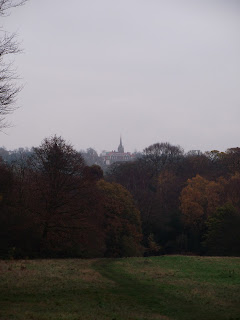Hampstead is a district of north central London. The key sights are a wealth of under-stated historical attractions, and the magnificent open spaces of Hampstead Heath. Kenwood House is one of the most accessible of London's great Regency homes. John Keats has a museum devoted to his life and work at his former residence here, and the inspiration for many of John Constable's landscapes is all around you on Hampstead Heath.
Hampstead Heath, or just the Heath as locals call it, totalling 320 hectares is the largest green-space in the inner London, it is not a park and has a very different character to the highly manicured Royal Parks in central London. Its proximity to, and ease of access from, densely populated urban areas of London, have ensured that Hampstead Heath has a special place in the hearts of Londoners.
There are a great many cultural references to Hampstead Heath, with perhaps some of the more notable being:
·
- Sir John Constable painted numerous landscapes from around the Heath
- John Keats composed his great "Ode to a Nightingale" whilst sitting at the Spaniard's Inn and hearing the sound of a nightingale on the heath.
- CS Lewis was inspired to write "The Lion, The Witch and The Wardrobe" whilst wandering Hampstead Heath on a snowy winter's day.
Parliament Hill: This is a high part of the Heath with clear open vistas, and the views looking south over the city are quite wonderful. On a clear morning, when you can see from Canary Wharf in the east all the way to Battersea Power Station in the west. However on our day we were lucky to see the trees in fount of us.
The Bathing Pond: There are three notable outdoor bathing ponds on the heath. The Men's Pond and Women's Pond are both part of the line of small lakes on the eastern edge of the heath known as Highgate Ponds, and the Mixed Pond is part of Hampstead Ponds on the opposite side.
The Hill Garden and Pergola: A quite beautiful hidden garden on West Heath, which is little known even too many Londoners. It was originally part of the gardens of 19th century Inverforth House built by Viscount Leverhulme (the then owner of Lever Brothers, now Unilever). The gardens are now common land and part of Hampstead Heath, and the most impressive feature is a restored timber pergola, covered with various climbing plants including roses, honeysuckle, clematis, wisteria and various vines.
Kenwood House: A splendid Regency house with enormous gardens and woodlands. The gardens alone are worth the visit and are a superb example of 18th century landscaping. Movie buffs will recognise Kenwood from Mansfield Park and Notting Hill amongst other famous films.
















